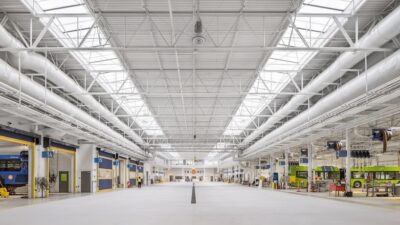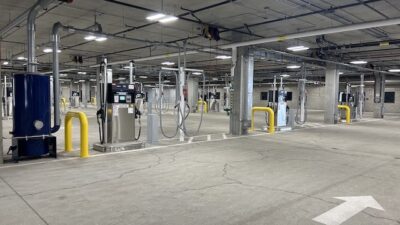Mechanical, electrical, plumbing and fire protection engineers focus on commercial buildings and the engineered systems within them

Commercial building insights
- When specifying systems into commercial buildings, engineers must consider the building’s use and the owner’s project requirements.
- Commercial building design must refer to a variety of codes and standards from organizations like ASHRAE or NFPA.
A commercial building is a type of facility that is used for the purpose of conducting business or other commercial activities. This can include office buildings, schools and educational facilities, retail stores, warehouses, industrial buildings and factories and other structures that are used to produce, distribute or sell goods or services.
Commercial buildings are typically larger and more complex than residential buildings, and they often have more specialized features and amenities to meet the needs of the businesses that operate within them. Some examples of commercial buildings include data centers, multi-dwelling buildings like dormitories and mission critical facilities.
According to the HVAC Equipment & Building Automation/Control Systems study, for example, the nonresidential building types the audience spend the most time designing included office buildings, government and military buildings and college/university buildings.
Mechanical, electrical, plumbing, fire protection, lighting and other engineers specify various systems into these commercial buildings, such as the HVAC, power, fire suppression or lighting systems.
There are several specialized nonresidential buildings that fall into this category, like mission critical facilities, medtail (medical retail) facilities and entertainment venues.




